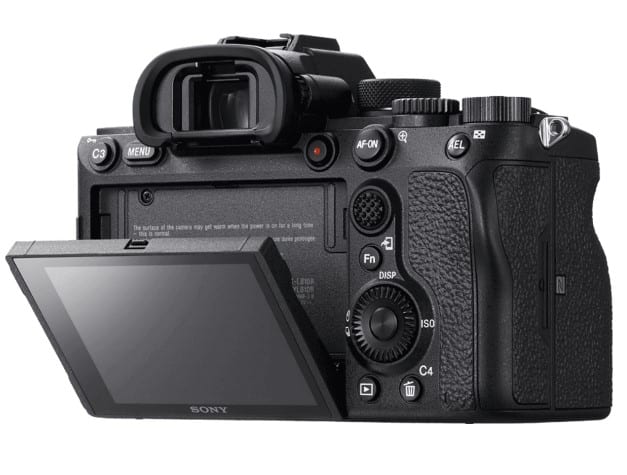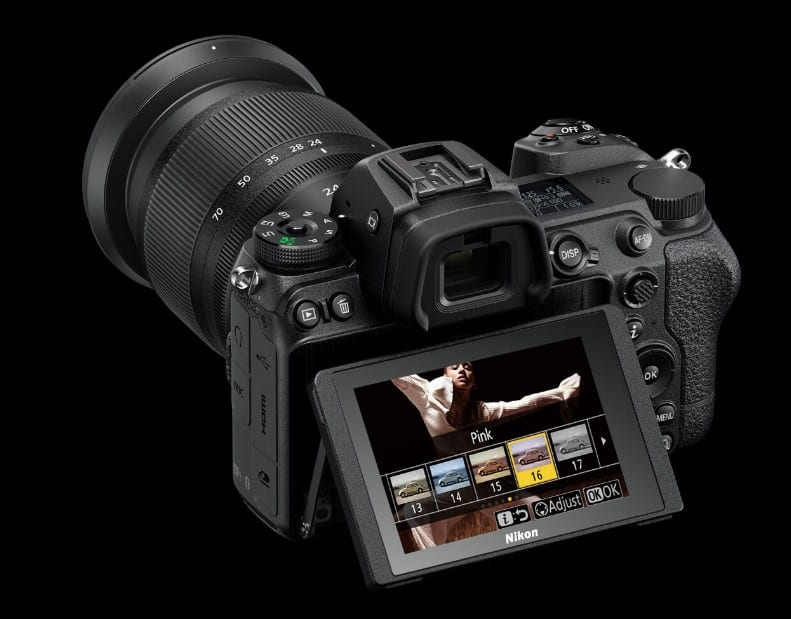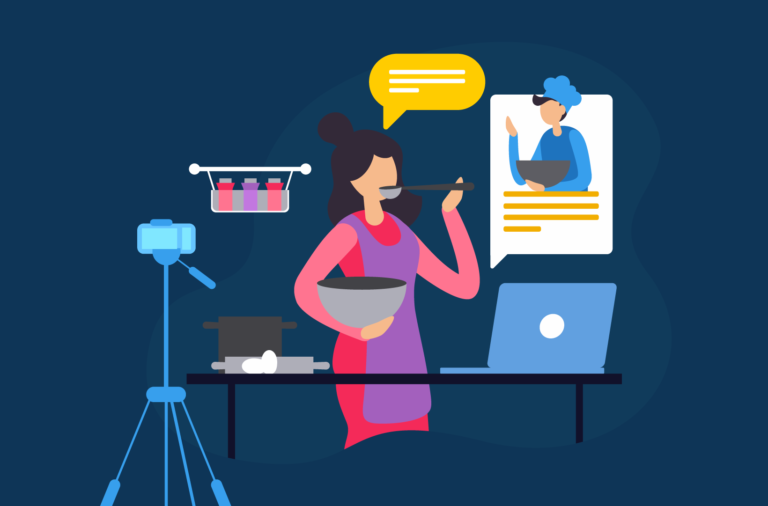Did you know that half of all Americans take photos of their food? That’s over 100 million people snapping pics of their meals all over the States. This phenomenon coincided with the rise of good-quality phone cameras, but what if you’re looking to take food photography more seriously?
If you’ve decided to find a good quality camera, we have collected together the very best for you to take a look at when starting your food photography venture.
🥑 Food photography fact: Did you know that one of the first food photographs was of a basket of peaches and a pineapple by William Henry Fox Talbot?
Do you need to invest in a dedicated camera?
There are several reasons why someone may or may not decide to invest in a camera. Understanding these is important when pursuing any level of food photography.
📱 Reasons to stick to your smartphone
For those just starting a food blog or not pursuing photography professionally due to budget considerations, the capabilities of modern smartphones may come as a pleasant surprise. The Google Pixel 8 Pro and Samsung S23 Ultra offer high-resolution cameras and many (sometimes even free) editing apps.
By sticking with your smartphone, you can easily edit and upload your photos to social media right from your fingertips.
📸 Reasons to upgrade to a new camera
Investing in a camera will improve your image quality and provide greater control over factors like lighting and focus. This upgrade can make all the difference in your food photography.
Beyond technical improvements, a dedicated camera unlocks so many creative possibilities. This, in turn, can elevate your work to a level that might attract monetization opportunities. For those aiming for a career as a professional photographer or involved in capturing food-related images, an investment like this could be indispensable.
Even for food bloggers, investing in a camera could be a good move if aiming for higher photo quality to attract partners or collaborators. This is especially true when engaged in on-site photography collaborations, as a dedicated camera shows professionalism.
Birthe Vandermeeren, Co-Founder of Bootstrapped Ventures, notes that if you have a food blog or similar website, the higher quality that cameras provide can also translate into better website performance:
“High-resolution, clear, and visually appealing images tend to attract more user engagement, such as clicks, shares, and longer on-page dwell time. These positive user signals indicate to search engines that the content is valuable and relevant, potentially resulting in higher rankings.”
Top 4 cameras for food photography
Choosing the right camera for food photography is important: you want to make sure you capture all the details that make dishes visually appealing!
Here we list four cameras known for their excellence in this niche.
Sony A7R IV

The Sony A7R IV is famous in the world of food photography, offering a combination of high-resolution and advanced features like:
- 61 Megapixels
- Fast autofocus
- 5-axis in-body image stabilization
- 4K video capability
- Electronic viewfinder (EVF)
Cost: $3,199.99
| Pros | Cons |
| Exceptional image quality. | Higher price point. |
| Versatile autofocus system. | Can be relatively heavy for some users. |
| Robust build quality. |
Canon EOS 6D Mark II

The Canon EOS 6D Mark II is a popular choice for food photographers looking for a reliable full-frame camera with a balance of performance and affordability. It offers:
- 26.2 Megapixels
- Vari-angle touchscreen
- Dual Pixel CMOS AF
- Built-in Wi-Fi and Bluetooth
Cost: $1,792.84
| Pros | Cons |
| Excellent image quality. | Limited 4K video capabilities. |
| User-friendly interface. | Autofocus systems could be more advanced. |
| Articulating touchscreen is advantageous for creative compositions. |
Nikon Z7 II

The Nikon Z7 II is a mirrorless camera that is great for capturing the intricate details of food while providing advanced features for creative control. These features are:
- 45.7 Megapixels
- Dual EXPEED 6 image processors
- 273-point hybrid AF system
- 5-Axis in-body image stabilization
Cost: $2,299.95
| Pros | Cons |
| Impressive image quality. | Relatively higher price compared to others on the market. |
| Robust build with weather-sealing. | Limited lens selection for the Z mount compared to other brands. |
| Advanced autofocus system. |
Panasonic Lumix S5

The Panasonic Lumix S5 is a versatile mirrorless camera suitable for food photographers who prioritize a compact and lightweight design without compromising on features:
- 24.2 Megapixels
- 5-Axis Dual I.S. 2 in-body stabilization
- 4K 60p video capability
- Vari-Angle LCD screen
Cost: $2,235.54
| Pros | Cons |
| Compact and lightweight design. | Autofocus system can be less advanced than some competitors. |
| Great for video and content creation. | Limited native lens selection compared to other systems. |
| In-body stabilization enhances low-light performance. |
Factors to consider when choosing a camera
Choosing the right camera for food photography all comes down to preference and what your main goals are. The choice often boils down to the type of camera, specific features, and how well they align with your photography style.
Let’s look at the key factors to consider:
Camera type
DSLR (Digital Single Lens Reflex)
A DSLR has a mirror mechanism that reflects light through the lens into an optical viewfinder. The mirror flips up when the photo is taken, allowing light to hit the image sensor and capture the photo. Thanks to larger sensors in DSLRs, they have high-resolution captures, ideal for intricate food photography details.
Advantages:
- Larger body size often results in longer battery life.
- Real-time optical viewfinder aids in framing shots precisely.
Disadvantages:
- Bulkier and heavier compared to their mirrorless counterparts.
- Audible noise due to mirror flipping during shots.
Mirrorless
As the name suggests, mirrorless cameras lack the mirror mechanism found in DSLRs. Images from the lens are digitally processed, and users see a digital preview on the screen or electronic viewfinder. The absence of a mirror flipping up and down results in quieter shots.
Advantages:
- Lighter weight and smaller body.
- Higher shooting speed and more accurate autofocusing.
Disadvantages:
- Limited battery life compared to DSLRs.
- Fewer native lens options in some systems.
Camera features
There are a number of features that make up a camera. The main ones you’re going to want to think about are:
- Sensor size: The physical dimensions of the sensor within a camera. While larger sensors can offer better image quality and control over depth of field, they might not be as critical in food photography. A larger sensor can still provide advantages in capturing details and producing higher-quality images.
- Megapixels: The resolution of the images captured by a camera sensor. Higher megapixels and resolution can benefit food photography, especially for large prints or detailed close-ups.
- Focus points: Areas within the frame where the camera can focus. More focus points provide flexibility in framing shots and ensure sharpness in the fine details of the food.
- Ability to shoot RAW: RAW files contain minimally processed data from the camera sensor. Shooting in RAW allows greater flexibility in post-processing, which is crucial for adjusting colors, exposure, and fine-tuning images without losing quality.
- ISO: Determines the sensitivity of the camera sensor to light. Controlling ISO is vital for preserving image quality, especially in low-light conditions common in food photography.
- Ability to shoot tethered: Connect the camera to a computer for real-time image transfer and control. Useful for more controlled shooting scenarios and immediate feedback.
- Frames Per Second (FPS): This represents the number of still images a camera can capture in one second. While not a priority for static subjects, high FPS is beneficial for capturing action shots or creating stop-motion cooking sequences.
- Manual focusing: The ability to manually adjust the focus of the lens. Offers precise control over what parts of the food are in focus, highlighting specific details or creating artistic blur effects.
Displaying your food photography with WP Recipe Maker
We’ve explored the best cameras for your food photography, but where do you go from here? You now need somewhere to present your photos in the best light possible. For food bloggers aiming to cultivate an audience and attract brand deals, showing off recipes is an art in itself, which is where WP Recipe Maker comes in.
A game-changer for WordPress users, this plugin transforms food photos into organized, professional-looking recipe cards that integrate directly with your blog posts. Get impressive SEO features, customizable designs, a user-friendly interface, and the ability to incorporate photos into every step of your recipe.
Serve up your photos alongside tasty recipes today with WP Recipe Maker!
Recommended for you: The Best Tripods for Food Photography (5 Best Picks)






